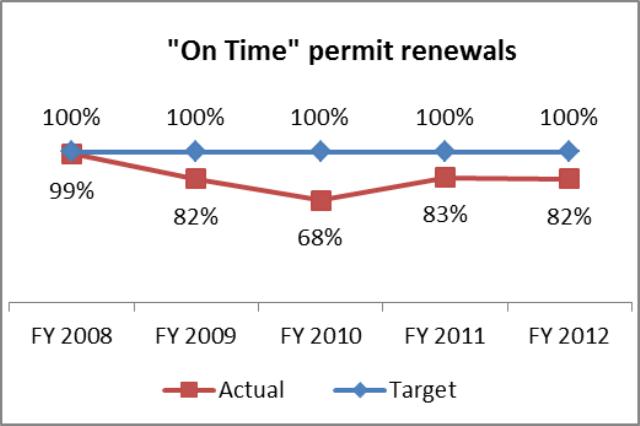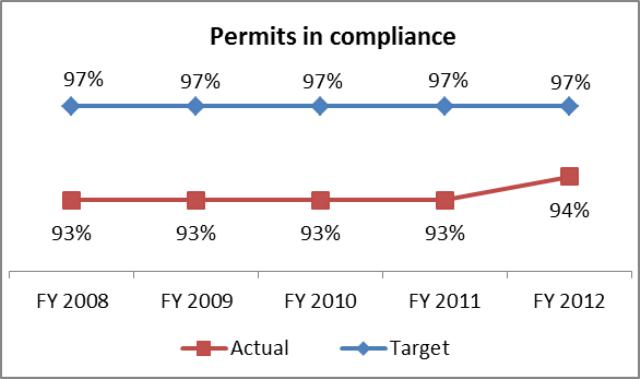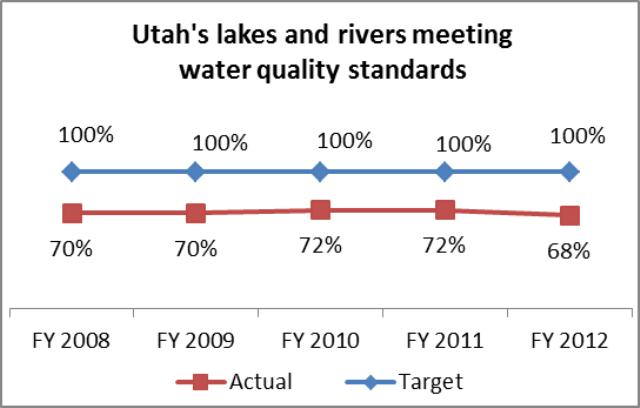Compendium of Budget Information for the 2013 General Session
| Natural Resources, Agriculture, & Environmental Quality Appropriations Subcommittee | ||||||||||||||||||||||||||||||||||||||||||||||||||||||||||||||||||||||||||||||||||||||||||||||||||||||||||||||||||||||||||||||||||||||||||||||||||||||||||||||||||||||||||||||||||||||||||||||||||||||||||||
| <-Previous Page | Subcommittee Table of Contents | Next Page-> | ||||||||||||||||||||||||||||||||||||||||||||||||||||||||||||||||||||||||||||||||||||||||||||||||||||||||||||||||||||||||||||||||||||||||||||||||||||||||||||||||||||||||||||||||||||||||||||||||||||||||||||
Function The mission of the Division of Water Quality is to protect public health and all beneficial uses of water by maintaining and enhancing the chemical, physical and biological integrity of Utah's waters. The major functions of the division include the following:
This division is divided into seven sections. Below is a brief description of the functions of each section: Engineering Section This section administers the state and federal loan/grant programs to fund high quality wastewater projects, manages the Utah Wastewater Operator Certification Program, and provides technical assistance to communities. It also conducts engineering plan reviews and issues construction permits for municipal and industrial water pollution control projects and provides technical assistance. The section also conducts operations and maintenance inspections and evaluations of all existing and newly constructed water pollution control projects. The Division of Water Quality is responsible to administer the Utah Wastewater Project Assistance Program. This program provides financial assistance to communities and individuals to meet their water quality needs.
UPDES Engineering Section This section is responsible for developing, implementing, and coordinating the engineering review and permit issuance of the Utah Pollutant Discharge Elimination System (UPDES) and Industrial Pretreatment programs. The UPDES program regulates point source wastewater discharges from municipal, industrial, federal and agricultural facilities. The section also administers the federal Biosolids Permit Program (by encouraging the safe and beneficial use of treated municipal sewage sludge), and the federal Pesticide Permitting Program (by encouraging safe application of pesticides and herbicides by large appliers). UPDES Inspection/Enforcement/Storm Water Section This section is responsible for the inspections of UPDES facilities and any necessary enforcement actions as a result of documented noncompliance. The Storm Water Program covers construction, industrial, and municipal storm water issues. Water Quality Management Section This section updates water quality standards to protect beneficial uses, and conducts statewide water quality assessments, to determine the quality of the state's lakes, reservoirs, and streams. Ground Water Protection This section develops, implements, and coordinates the Utah Ground Water Quality Protection and the Underground Injection Control (UIC) Programs. This section issues and enforces ground water permits and UIC permits. The section also assists local governments to develop ground water protection programs to compliment land use planning. Monitoring Section This section is responsible for conducting chemical, physical, and biological monitoring of surface and ground waters in the state and effluent discharges to ensure compliance with permits and ambient water quality standards. Watershed Protection Section This section manages the non-point source pollution control program and is responsible for developing and implementing water quality plans which restore impaired waters so they may again fully support their beneficial uses and meet state water quality standards. Performance Surface and ground water permits have a 5-year life span that requires permit renewal. The graph below measures the percentage of "on time" permit renewals. Surface water permit renewals have been hampered by regulation changes at the federal level that have seen agricultural permits litigated multiple times resulting in states waiting to see what the final federal regulations will be prior to promulgating state rules.  Surface and ground water discharge permits include detailed requirements including compliance with effluent limits or ground water protection levels, monthly and quarterly effluent or ground water sampling, reporting and other performance measures. This measure reports the percentage of these permits that are operating in compliance with all state and federal requirements.  The purpose of this measure is to assess the water quality of Utah's rivers and lakes to see if they are meeting their standards established to protect beneficial uses. These analyses are conducted on a biennial basis due to EPA requirements, which is probably too short of a period for measurable trends. The measure changes whenever water quality standards or assessment methods change, which happens frequently (this is the reason for the recent 2% decline). The division is addressing these shortcomings by developing an overall water quality index that will be applied to a randomly selected population so that data among reporting cycles are more comparable.  In addition to the key performance measures listed above, the division reported the following performances measures for FY 2012:
Funding Detail For more detail about a particular source of finance or organizational unit, click a linked entry in the left column of the table(s) below.
| ||||||||||||||||||||||||||||||||||||||||||||||||||||||||||||||||||||||||||||||||||||||||||||||||||||||||||||||||||||||||||||||||||||||||||||||||||||||||||||||||||||||||||||||||||||||||||||||||||||||||||||
| <-Previous Page | Next Page-> |
COBI contains unaudited data as presented to the Legislature by state agencies at the time of publication. For audited financial data see the State of Utah's Comprehensive Annual Financial Reports.